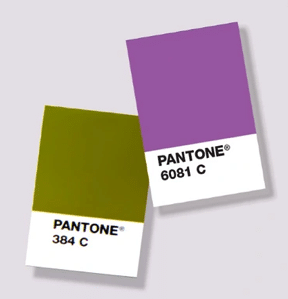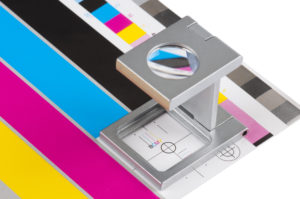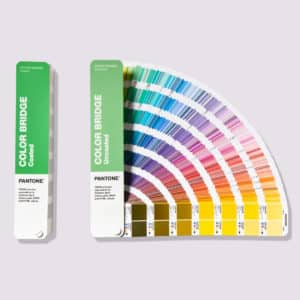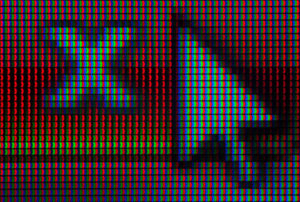What’s the Difference between PMS, CMYK, RGB, HEX?
It is crucial for all creative designers, marketers, promo, and print specialists to be able to differentiate when it is most appropriate to use a certain color. Knowing the importance of color profiles allows creators to optimize their design process and understand what colors best fit when creating printed materials, promotional products, branded collateral, and graphic/web designs.
The ability to precisely match color is crucial for achieving consistent results across different printing processes and mediums, providing brand continuity.
Pantone Matching System (PMS)
Pantone Matching System, or PMS, is a standardized color-code matching system. This color profile is used in the printing, packaging, promotional products, and graphic design industry. PMS colors are created by mixing a precise combination of ink colors to achieve a specific, consistent, and reproducible shade. These colors are then assigned a certain number that you can reference each time. For example, PMS 185 could be considered a standard red color.
This color profile is most used in the printing and promo industry and is best for materials that require exact color matching, such as logos that use specific brand colors.
PMS colors help designers and printers ensure that the colors and designs they choose will appear the same across all printed materials, regardless of the printing process or substrate.
PMS colors guarantee color accuracy, consistency, and quality, making them an essential tool for any branding project. Here is the link to get you started.
Use For: Printing designs that have a limited colors palette. Usually up to 3 colors.
Printing methods: Offset printing, letterpress, silkscreen

CMYK
CMYK refers to Cyan, Magenta, Yellow, and Key (Black). These colors are typically used in a four-color process printing method, where dots of each color are overlaid on top of each other to create the color and full-color image.

CMYK is a crucial color profile in the printing industry as it allows for the creation of millions of different color shades and tones. It is best used to create printed materials such as brochures, flyers, and business cards. Using CMYK colors for printed materials offers a wide range of printable colors. It is a universally adopted color system that can produce just about any color you desire. But it comes with a limited color range. There are some things you need to watch out for.
The colors that you see on your monitor are RGB colors and not CMYK and may not perfectly represent how that color will reproduce using CMYK. This is especially apparent for colors in the blue range. Some blues will turn out much duller looking compared to the color on a monitor. This is also true when converting some PMS colors to CMYK.
These Pantone Color Bridge swatch books are a great tool to see what a PMS color looks when converted to CMYK.
Use for: Printing (Offset and Digital), Full-Color promo products

RGB
The RGB color profile refers to Red, Green, and Blue. This color profile is used in digital media and is what is used to display images on your televisions, monitors and mobile screens. Mixing different levels of red, green, and blue light creates a nearly infinite spectrum of colors, resulting in vibrant color reproduction.
When creating digital graphics or designing web-based applications, using RGB colors is essential to ensure that the colors are accurately displayed on screens. RGB is the standard color model for digital media and will ensure that the colors are displayed consistently and accurately across various devices.
Use for: Digital/Graphic
Examples: Website, Graphic Design

Hexadecimal Color (Hex)
HEX colors are a combination of letters and numbers representing an RGB color. Each color is defined by a unique six-digit code representing the color combinations of red, green, and blue values.
Mainly used to set HTML or CSS color properties when coding, there is no informational difference between RGB and Hex. If you come from a coding background, you may use hex. If your roots are in design, you may feel more comfortable using RGB.
Use For: Web
Examples: Digital Art, Digital Collateral, Website Design, and Development
Choosing the right color profiles for your creative work is a vital step in ensuring your project is produced correctly. When working with any vendor, get the color profile specifications along with all the other specs. Doing everything you can to stay in control of your brand colors is crucial to a brand’s identity.
Being an integrated communications company, MOSAIC has a team of experts who specialize in color-critical work and have extensive experience working with different color profiles. With our in-house ink lab and a team of creative and print professionals, we’re well-equipped to bring your most challenging, product-centric designs to life. So, whether you need digital or print designs, bring us your most creative work, and we’ll help you achieve your vision while upholding your brand’s standards, contact our print and creative experts today!
Related:
References:
https://www.pantone.com/color-systems/pantone-color-systems-explained
https://acsweb.ucsd.edu/~mtakemot/CSE3/Lab2/ColorModels.htm
https://www.techtarget.com/whatis/definition/RGB-red-green-and-blue

